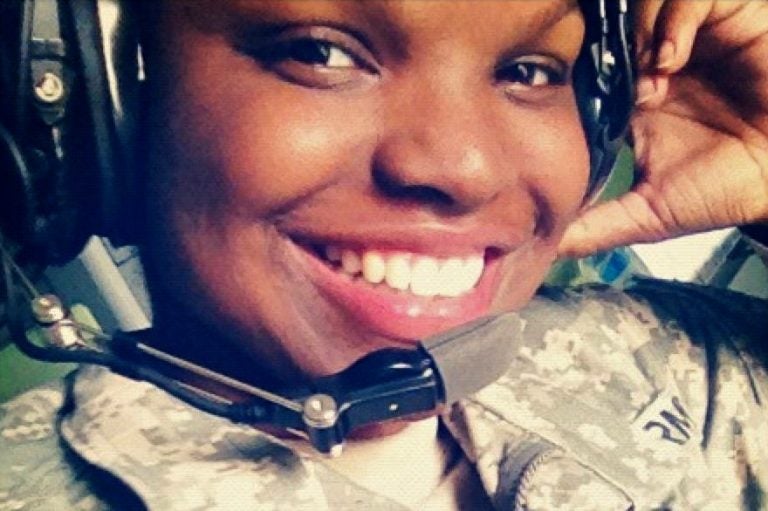Suicide crisis reaches beyond combat veterans
Veterans overall have a 22 percent higher risk of suicide than the general population, but women who served are more than twice as likely to take their own life.

Pennsylvania National Guard veteran Darcel Rideout attempted suicide about a year ago. She now advocates for suicide prevention and awareness. (Photo provided)
Darcel Rideout often found her 10 years in the Pennsylvania National Guard to be “exhilarating.” But the stresses of the job and the time away from family took a toll on her, and she battled with depression during the last few years of her service.
“When you’re serving in the military,” Rideout said, “there are a lot of sacrifices that you have to make.”
The Mt. Airy resident, now 28, was also involved in a custody battle over her 6-month-old son during that time. Her depression worsened, and she attempted suicide about a year ago.
The risk of suicide among U.S. military veterans has remained at the same high level despite efforts in recent years to address the crisis. All veterans are affected by the crisis, even if they never served in a combat zone.
According a landmark study completed last year by the Department of Veterans Affairs, an average of 20 veterans took their own life each day in 2014. The study also found that suicides are rising faster among veterans than the general population. Veterans overall have a 22 percent higher risk of suicide than the general population, but women who served are more than twice as likely to take their own life.
Leah Blain, director of the Steven A. Cohen Military Family Clinic at the University of Pennsylvania, said vet suicides don’t seem to be dropping, and researchers are still trying to understand what factors are behind their heightened risk.
“All we really know right now is there’s no one factor,” she said. “Deployment does not seem to be a factor.”
One major study found that veterans who didn’t go to Iraq or Afghanistan were just as much at risk of suicide as those who did serve in the combat zones.
Blain also said former soldiers often struggle with the transition back to civilian life after discharge. Active military members make up just 0.4 percent of the U.S. population, and many report feeling disconnected when they re-enter the larger society.
“When people came back from World War II, they came back to parades and handshakes and jobs, and their community there for them,” said Sara Dawdy, CEO of the organization Mission 22.
That’s changed today, Dawdy said. Americans are not “taking them into our arms and saying, ‘Hey, we’re here for you,’ ” she said.
Mission 22 is working to fight vet suicides, in part, by creating a network of “ambassadors” who help integrate returning soldiers back into their communities.
Places such as the Cohen clinic are also providing new opportunities for vets struggling with mental health problems to get help. Rideout went in for treatment there after her suicide attempt, and she credits it for saving her life.
“I realized that suicide, death, is not the only option,” Rideout said. “That there’s a way to cope and there’s a way to recover from the trauma.”
She’s now promoting suicide prevention and awareness.
WHYY is your source for fact-based, in-depth journalism and information. As a nonprofit organization, we rely on financial support from readers like you. Please give today.





